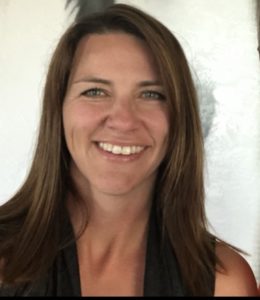July 26, 2022
Disability Pride month began in the United States in 1990, and has since become a global movement to empower those experiencing disabilities. The World Health Organization defines disability as:
The interaction between individuals with a health condition (e.g., cerebral palsy, Down syndrome and depression) and personal and environmental factors (e.g., negative attitudes, inaccessible transportation and public buildings, and limited social supports).
 Throughout the month of July, advocates and members of the disability community take time to reflect on the barriers currently present in society, and how Canadians can support them moving forward. CSEP-CEP and Recreation Therapist, Bobbi-Jo Atchison, is the owner and operator of Equality Fitness. Her work focuses on providing equitable access to fitness, physical activity, recreation and sport to those who experience barriers to being physically active in their own communities. In addition to this, she is an Assistant Lecturer in the Faculty of Kinesiology, Sport and Recreation at the University of Alberta, and has recently begun teaching in the Faculty of Education at Concordia University of Edmonton. Bobbi-Jo took the opportunity to share her experiences, insight, and make recommendations for exercise professionals in order to help make communities more accessible.
Throughout the month of July, advocates and members of the disability community take time to reflect on the barriers currently present in society, and how Canadians can support them moving forward. CSEP-CEP and Recreation Therapist, Bobbi-Jo Atchison, is the owner and operator of Equality Fitness. Her work focuses on providing equitable access to fitness, physical activity, recreation and sport to those who experience barriers to being physically active in their own communities. In addition to this, she is an Assistant Lecturer in the Faculty of Kinesiology, Sport and Recreation at the University of Alberta, and has recently begun teaching in the Faculty of Education at Concordia University of Edmonton. Bobbi-Jo took the opportunity to share her experiences, insight, and make recommendations for exercise professionals in order to help make communities more accessible.
What barriers do disability community members currently face in the exercise industry?
While we have come a long way since I first started my career, we have a long way to go. Barriers continue to be present in the areas of physical access, suitable program options, rural programming for individuals experiencing disability, policies and procedures, staff knowledge and training, and societal norms.
One very common barrier I continue to see is the idea that a ‘one size fits all’ or ‘cookie cutter’ approach can be used to enhance inclusion in our communities. Navigating inclusion in our communities requires professionals to look outside the box and be self reflexive and aware of the ableist and systemic barriers that continue to be present and reflected in our day-to-day practices.
What are some steps exercise professionals can take to ensure equitable access and participation for all?
Consult with and get involved in the disability community in your area. You will quickly learn that meeting one person experiencing disability, means you have met one person experiencing disability. Inclusion is an ongoing process versus a checklist and getting involved at a greater level in your disability community can help provide you with many tools for your toolbox.
Be with people as they tell their stories. It is easy to put our own personal assumptions and goals into what we feel others may need in their fitness journey. Working to unlearn these assumptions takes critical self reflection and the first step for many can include becoming aware of and acknowledging what assumptions and biases we hold.
I believe it is also important to acknowledge and understand that inclusion is not just about physical access to fitness. While this is very important, inclusion is about supporting everyone who experiences barriers, this includes those experiencing developmental, mental health or sensory impairments. Understanding that spaces may be too large, too loud, too crowded, or too overstimulating is also an important factor when planning and developing inclusive fitness programs.
Do you have any resources that might support exercise professionals in creating an inclusive environment?
There are many amazing organizations and resources out there. A couple quick resources that come to mind include:
The Canadian Disability Participation Project (CDPP):
The CDPP has developed a Disability and Exercise Training resource which includes six evidence-informed steps along with key considerations for health care and exercise professionals for discussing, prescribing, and adapting exercise for individuals experiencing disability
Adapted Physical Activity Graduate Certificate:
The Faculty of Kinesiology, Sport and Recreation at the University of Alberta has developed a certificate that focuses on using a disability-affirming approach to enhance professional practice and reflexive learning.
Equality Fitness & Recreation is also happy to answer any questions you may have or provide resources for accessibility, inclusion, and professional training. You can contact us at info@equalityfitness.com.
CSEP Advanced Learning Module: Disability and Exercise
Instructors: Jennifer Leo, Ph.D, and Bobbi-Jo Atchinson, CSEP-CEP
 The Disability and Exercise online module is a practical training source for individuals in the health and fitness industry who are looking to be more inclusive in their practice. Learn communication tips when working with a client, how to prescribe exercise for an individual with a disability and how to set up a safe and inclusive exercise environment.
The Disability and Exercise online module is a practical training source for individuals in the health and fitness industry who are looking to be more inclusive in their practice. Learn communication tips when working with a client, how to prescribe exercise for an individual with a disability and how to set up a safe and inclusive exercise environment.
CSEP PDCs: 8





